Some of my friends are Calligraphy artists, and they sometimes talk about mounting their artworks. I’ve seen their completed works but never seen the process. This time, I spoke to the art mounters who have been in business for over 60years.
Specialized techniques of mounting art are called “Hyougu” or “Hyouso” here in Japan. Let’s find out what they are and their history.
K:How did this Hyougu technique start here in Japan?
MH : It is said that the culture of Hyougu started when the Buddhist monks mounted passages from sutras and then scrolled to make them handy to carry for missionary works. That culture was imported into Japan around the Nara to the Heian period, along with Buddhism. At the time, the Buddhist monks made them by themselves, so the custom of using prayer beads remains in the process.
K:How have Hyougu techniques been used in Japanese culture?
MH : The techniques are used to make hanging scrolls, folding scrolls, handscrolls, Japanese-style art frames, Japanese sliding doors, and art restoration. There was a housing boom in post world war 2, and paper mounters had many works making Japanese sliding doors and installing wallpapers for the houses. That is why these days, we have mounters specialized in installing wallpapers and making Japanese-style doors.
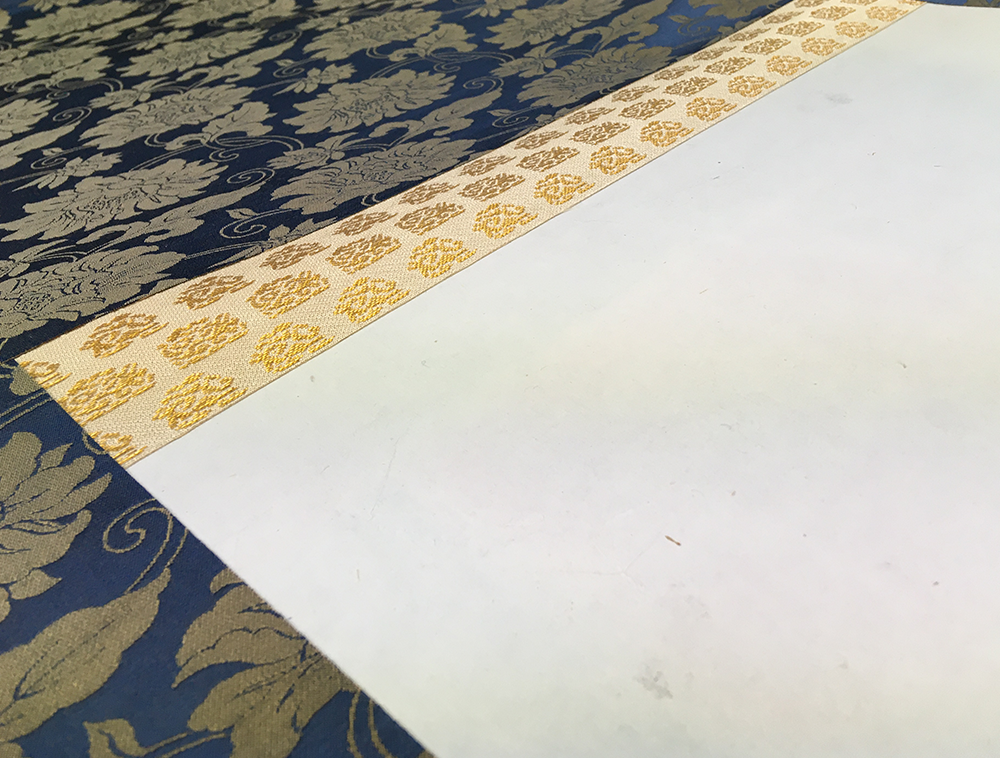
It’s a shame to end traditional skills
K:What made you become an art mounter?
MH : I followed in my father’s footsteps and became an art mounter. In my father’s days, his main job was to make sliding doors, install wallpapers, and then started building and coloring art frames. Requests from calligraphers grew, so his work shifted to mount artworks in time. In my generation, I do only mount calligraphy and paintings and art restoration. By favors of my friends and neighbors, I change sliding door’s papers sometimes, though.
K:Is it the same for you, Daisaku san?
Daisaku san : I had no intention of following my grandfather’s and father’s footsteps, so I was a business person till a few years ago. We were going to close this family business after my father’s retirement. In my 30s, I helped my father for one and a half years while working as a business person. When he injured his foot, I started coming here and helping every weekend. Watching his work closely, I concluded it’s a shame to end his skills and waste this place and all the tools my grandfather and father used. We have a lot of requests to mount artworks using the traditional method. One of the reasons is that few art mounters can finish the work traditionally. I thought I needed to keep this technique. Right before the age of 40, I thought it’s now or never. So I decided to quit work and focus on learning my father’s skills.
The number of classic art mounters are decreasing…
K:You said that few art mounters could work traditionally. What methods are more popular now?
MH : Mounting artworks using machines is getting popular. It uses Japanese washi with glue and press artwork and the washi with heat. This method is easy and shortens the time necessary. It only takes 3 hours to complete simple ones. There are two types of handwork methods. The traditional way uses natural glue, and the other process uses synthesized bonds. With synthesized bonds, it usually takes one month to complete. With natural glue, it takes three months at least. When we work on art restoration, we use natural glue and complete it traditionally.
There are places only using machines these days. But our work is totally different.
Many classic art mounters may remain in Kyoto, but the numbers in Kyushu are decreasing every year. Our work is not something close to daily life. However, to fulfill a request for art restoration and replication of the museum collection, we need to carry on the traditional skills.
K:What kind of requests are you getting more these days?
MH : We get various requests like art restoration of ancient hang scrolls, replications, and also mounting calligraphy works from the artists. When we repair old works, we peel off everything and backing art from the beginning. If there are stains, we start by removing the stains. Sometimes, we make scrolls using a Kimono or slash, which is a keepsake from parents or grandparents.
K:Is the fabric used for mounting different from other materials like Kimono?
MH : We use the cloth called “Kireji.” Kimono and slash are thicker and stronger than the Kireji. When we use thicker fabric, we use thinner lining washi paper and adjust the thickness. In the classics, there are pieces used Kesa; a Buddhist stole which high-ranked monks wear.
Lining washi paper comes in different thicknesses. We usually keep five different paper thicknesses and use the best lining washi paper thickness depending on the situation. It is not just thickness; there are a variety of colors and textures. Choosing a lining washi paper depends on the artwork and the fabric we use.
K:How do you choose the fabric to use on scrolls?
MH : We select the fabric depending on customers’ requests, the purpose and usage of scrolls, and the piece’s content.
A process called “Toriawase” is the process we select the fabric for the art piece. There are various hang scrolls used for a Buddhist service, a shrine ritual, and art. The hang scroll styles are different from the use, so we select the fabric and a string and Jikusaki (bottom rod).
Various types of hanging scrolls in our culture
K:I did not know there are different styles of hang scroll.
MH : Yes. There are hanging scrolls with strips called “Ichimonji” on top and bottom, hanging scrolls which hang down a pair of strips of cloth called “Futai,” and the threefold style which uses two different fabrics, etc. There is also a style that puts a few millimeters of thin strips on either side of the art piece. So, we need to select the fabric and materials every time, depending on the hanging scroll.

K:There are many big boards like Fusuma(paper-covered sliding door). How do you use them?
MH : These boards are called Karibariita. We use these boards to dry after applying the lining paper to the art piece’s back or the fabric. Drying one needs one board, so we have many boards here. We covered the board with the silver leaf for a request. A Japanese painting artist will paint on it.
K:I see various types of brushes there.
MH : Depending on the process, we use a different brush. There is a brush used to apply glue to the artwork and used after attaching the lining paper or the fabric to the art piece. We use a heavy brush to pound papers to bring adhesive strength and a small thin brush to paste glue on edge.
K:Earlier, you told me you use different types of Japanese washi papers.
MH : In making a hanging scroll, we apply the lining washi papers to the backside of the artwork or the fabrics, and the lining washi papers are all different in the steps. The lining washi paper used for making strength and thickness to the artwork or the fabric at the first step (Hadauchi) is Minoshi(washi paper). After attaching the artwork and the material and forming it into the shape of hanging scrolls, we apply the lining washi paper called Misushi. This step is called Nakaura, and sometimes we skip this when the artwork or the fabric is thick. At the last stage, which is called Soura, we use Udashi to apply to the backside of hanging scrolls. Soura includes the process to smooth the rear of the hanging scrolls, gives strength to the hanging scrolls, and makes it easy to scroll.
The thickness of the washi paper depends on the other factors. If the thickness of hanging scrolls is unbalanced, it doesn’t stay straight when it hangs on the wall. Choosing a suitable washi paper is essential.
When we traditionally make a hanging scroll, we use Minoshi(washi paper) made in Mino city, Ise.
K:I didn’t know the backside of a hanging scroll had applied washi paper.
MH : I think there are not many occasions to watch a hanging scroll closely for most people. We used Udashi (washi paper) to back this hanging scroll. The traditional washi paper size is fixed, so we need to paste a couple of pieces together. We try making the pasted part smooth and unnoticeable by pounding the parts using Uchibake. We also use Uchibake when the glue doesn’t absorb quickly. Pounding papers with Uchibake make the texture rough and a little uneven. To complete the work, we make it smooth and even by using Urazuridama.
There are times we use roll lining washi papers, but many customers prefer hanging scrolls made traditionally.
K:Does the weather influence the process?
MH : Yes. The rainy season is unsuitable for the finishing touch. It is better to do it when the air is dry. The process of Tsukemawashi that attaches the artwork and the fabric before Nakaura, or the process of Sourauchi, is better to do on a humid day. So basically, we need to work with the weather as well.
Preparing glue
Straining impurities from glue to use for Urauchi. Then add some water to adjust the glue for the thickness of the papers. It needs thin glue for the thin paper and thick glue for the thick paper.
Applying the lining paper to the back of the artwork
Water and glue are indispensable to mounting art. Wet washi paper gets transparent, and it seems easy to tear, but it doesn’t. This is the process called Hadaura. You can see how Japanese washi has strength and the artisan’s skill.
Challenging keeps tradition continue
K:I have one last question. What is the future you see? What do you want to do?
Daisaku san: I want to continue the skill that my father preserved and developed. Also, I want to challenge new things with others.
K:What kind of challenges are you looking for?
Daisaku san : Well, I collaborated with my artist friend, and I made a hanging scroll with an art piece that was painted on canvas fabric for the first time. Usually, all the artworks we handle uses Japanese washi papers. With Japanese washi papers, we use water and glue to mount them. I couldn’t use water with canvas fabrics, so it required many trials and errors, but I could make it in the end. That made me realize it is essential to try something new, thinking differently sometimes. Of course, there are so many things I have to learn, though.
MH : At the moment, we only make Japanese-style scrolls, but I would like to make scrolls that suit a Western-style room.
At last…
The day I visited Mannendo, it was a snowing day. Along with coldness and the image of traditional crafters, I was feeling tense. But it all went away after I started talking to them. They link the tradition to the future through their handworks and warm hearts. I cannot wait to see what they will create next using their skills. Please contact them if you are thinking of making something out of your parents’ or grandparents’ keepsakes. You won’t regret it.
「Mounting shop Mannendo」
web: https://mannendo-sinse1956.qwc.jp/
email: mannendou1956@gmail.com



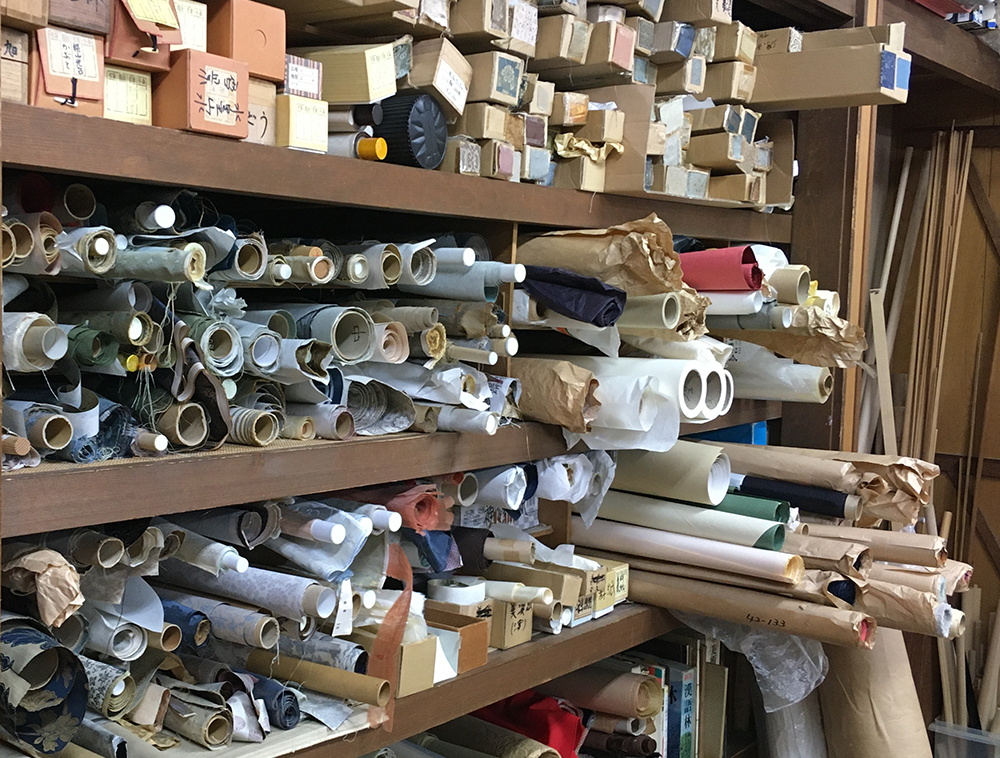
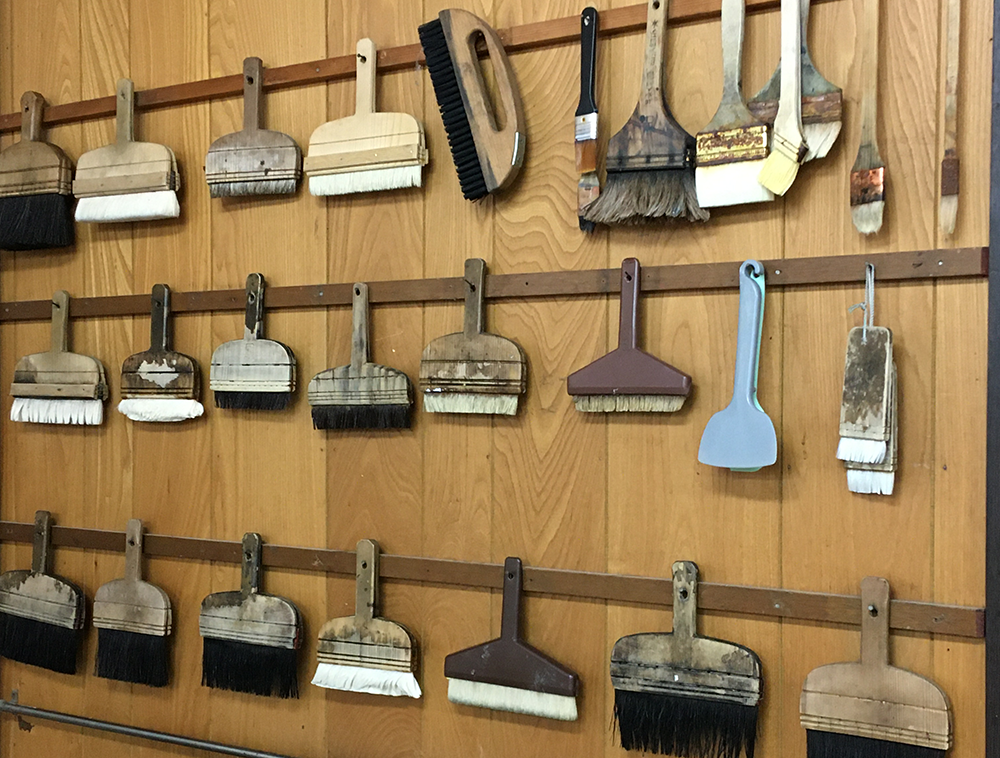
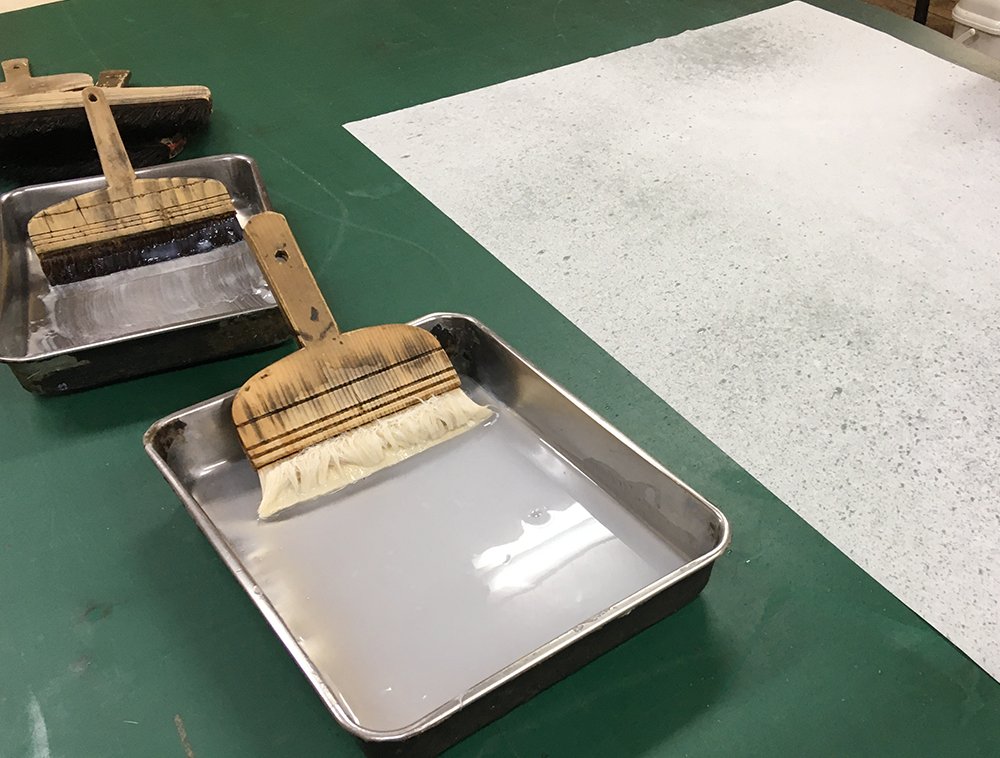

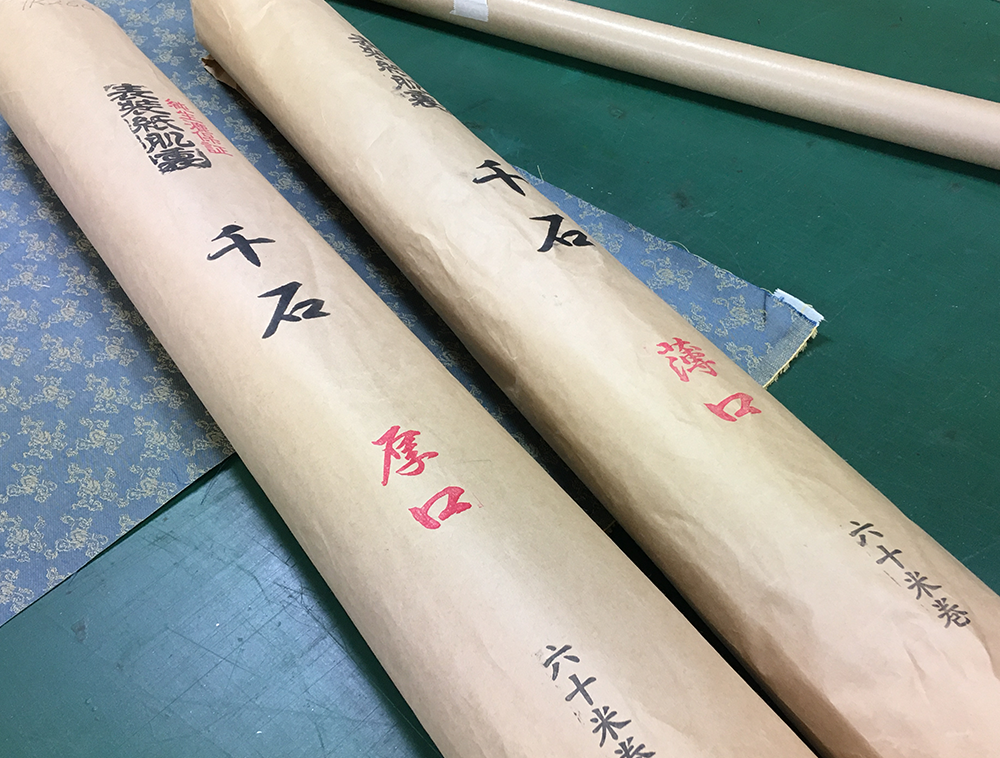


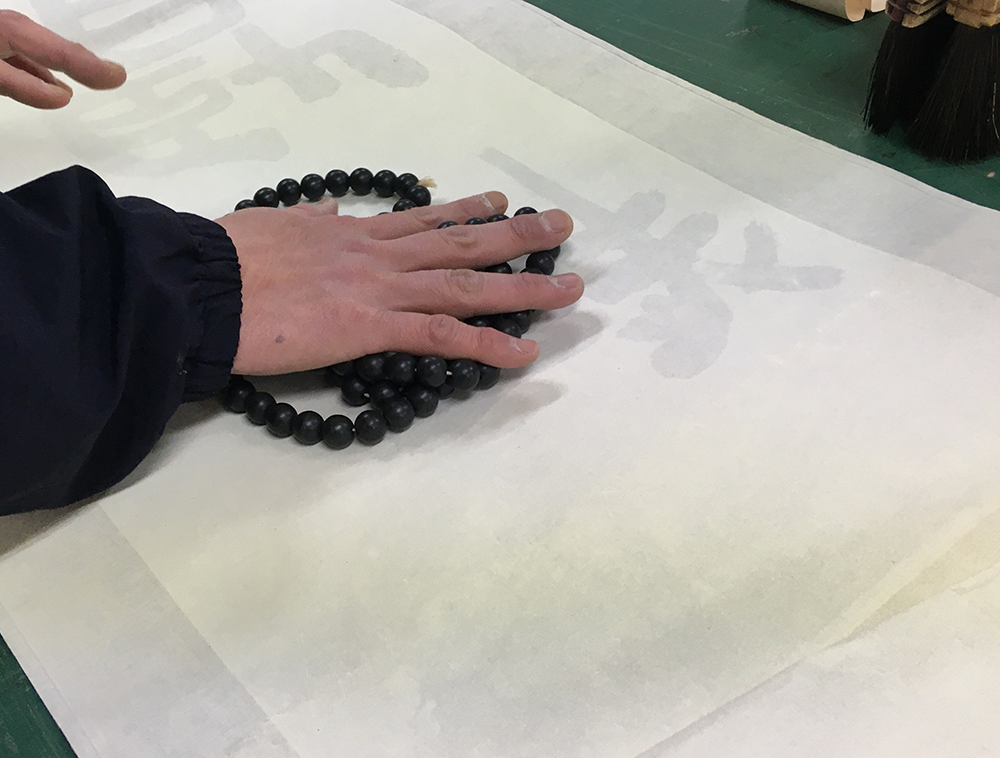

Comments